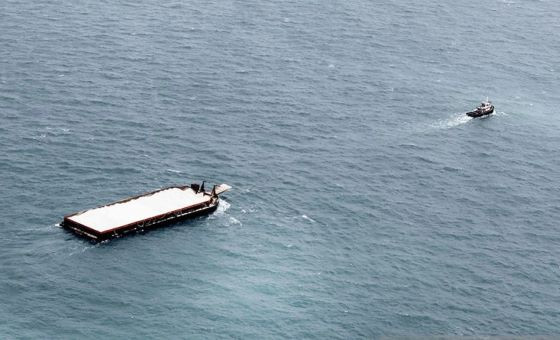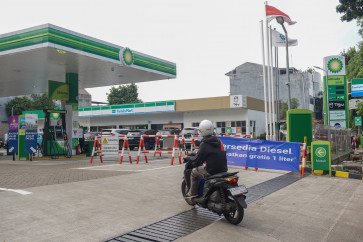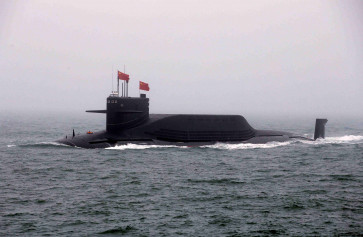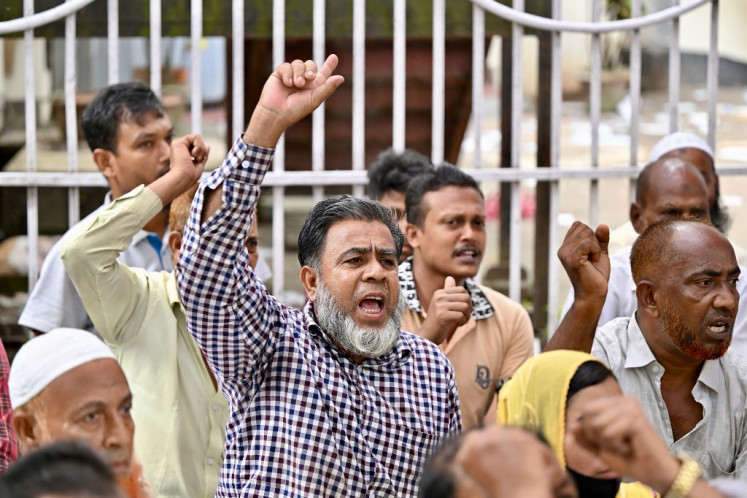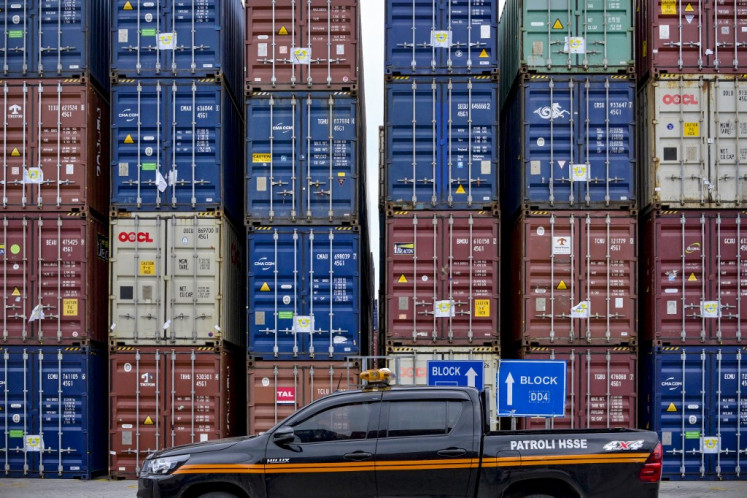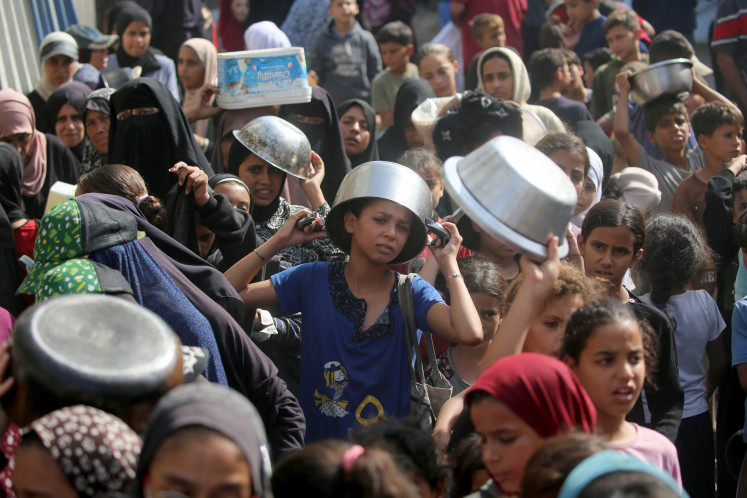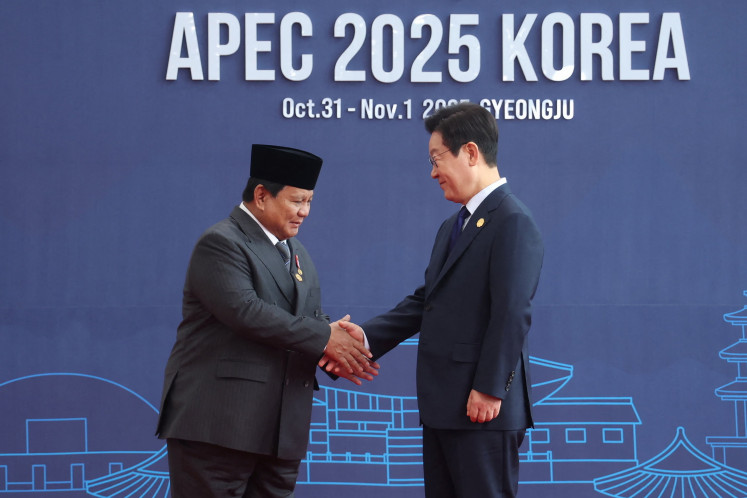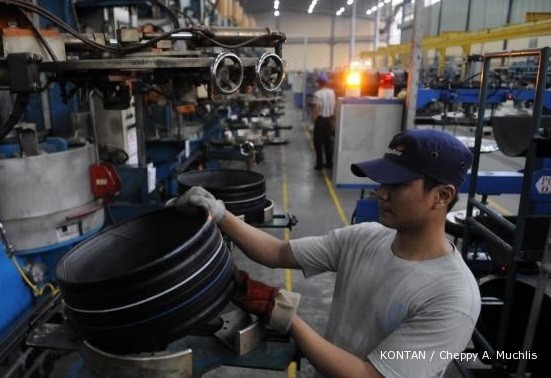Popular Reads
Top Results
Can't find what you're looking for?
View all search resultsPopular Reads
Top Results
Can't find what you're looking for?
View all search resultsSea sand extraction is destructive; there are alternatives
Indonesia needs to rethink the previous administration's decision to lift a decades-long ban on sea sand exports by considering alternatives to sand dredging, which does more harm than good to both the economy and the environment.
Change text size
Gift Premium Articles
to Anyone
O
ver 20 years ago, president Megawati Soekarnoputri banned the export of sea sand from the archipelagic nation in response to the widespread environmental and economic damage it was causing.
Unchecked sea sand exports destroyed 26 sand islands in Riau. In Banten, sand mining eroded the shoreline and destroyed coral reefs.
Even after the ban, illegal sand mining continued, but at a lesser rate.
Where did the sand go? By and large, it went to Singapore. As Indonesian islands shrank, its tiny but rich neighbor grew. Sea sand from Indonesia and other nations has been used to expand Singapore’s land area by 24 percent.
Before the trade was banned in 2002, more than 50 million tonnes of sand were shipped to Singapore each year. With Indonesian sand restricted, the island nation imported sand from Malaysia until it, too, banned exports in 2019.
But now, sea sand mining is set to return to Indonesia. In 2023, president Joko “Jokowi” Widodo lifted the ban. Last year, the government listed seven areas in Indonesia where sand mining could resume. Up to 17 billion cubic meters of sand would be legally permitted to be extracted.
This is bad news for the environment, as well as for fishers who will see their catches decline. The good news is that there are emerging alternatives, such as sand from a clean by-product or coproduct of metal ore mining.
In defending the move, Jokowi claimed that renewed extraction would be legal only for seafloor sediment, not sand, and its removal would benefit ship movement.
Mining expert Andang Bachtiar has pointed out that the seven extraction areas are not known for muddy sediment. Rather, some are relics of ancient rivers, full of sand ideal for coastal reclamation.
He told Indonesia Business Post: “Some 20,000 to 10,000 years ago, ancient rivers ran across the Sunda Shelf, forming the sand that we see today. This old sand is better suited for coastal reclamation than the mud, clay or silt that rivers currently carry […] The mining of prehistoric sand in shallow water has nothing to do with the silting of rivers today.”
Criticism of the government’s plans has come from environmental organizations and coastal communities worried about damage to fisheries.
Extracting sea sand is done with dredger ships, which grab or suck up sand from the bottom and store it. It is a destructive process, removing habitat for fish, invertebrates and plant life. It also creates clouds of sediment, which can settle on nearby coral reefs or make the water murky.
An estimated 2.7 million Indonesians fish for a living, and the nation of over 17,000 islands is one of the most reliant on fish in the world. But sand dredging can trash fisheries.
During the decades when sea sand mining was legal, dozens of islands in Riau disappeared due to sand extraction. Removing sand changes waves and currents, meaning islands can be eaten away.
While sand mining is lucrative, the profits pale in comparison to the indirect costs. Analysis by the Center of Economic and Law Studies (CELIOS) estimates that restarting exports will be a net loss to the domestic economy, with gains for businesses and government more than offset by losses to fish catches and fishery jobs.
While we don’t know where Indonesian sea sand will be sold, we do know Singapore’s demand for sand is ongoing. By 2030, the island state aims to be 30 percent larger than it was at independence. Over the last 20 years, Singapore has imported more than half a billion tonnes of sand.
Globally, the world now uses 50 billion tonnes of sand, gravel and crushed stone a year.
Sand is the second-most used global commodity after water. According to a 2022 study, the world could run out of construction-grade sand by 2050. This is why the United Nations now considers sand extraction a crisis.
The world will need alternatives. These can include crushed rock, recycled aggregates, recycled materials and by-products of industrial and mining processes. Our research team has explored one option in depth: OreSand, a type of manufactured sand resulting from mineral ore processing.
This option is already being used to a limited extent. In 2023 for instance, Brazilian iron mining giant Vale produced 1 million tonnes of OreSand, with plans to expand further.
Indonesia could produce sand in the same way, given its large mining sector in metals like nickel and copper. Adding a process to extract sand would conserve land and reduce the need for dedicated tailings dams or dumps.
If the country continues to green-light sea sand extraction, it will soon see the damage done: not only to the environment but also to fishers, who will see their livelihood upended.
---
Bioantika and Hernandi Albeto Octaviano are PhD candidates at the Global Centre for Mineral Security at The University of Queensland’s Sustainable Minerals Institute. This article is republished under a Creative Commons license.

